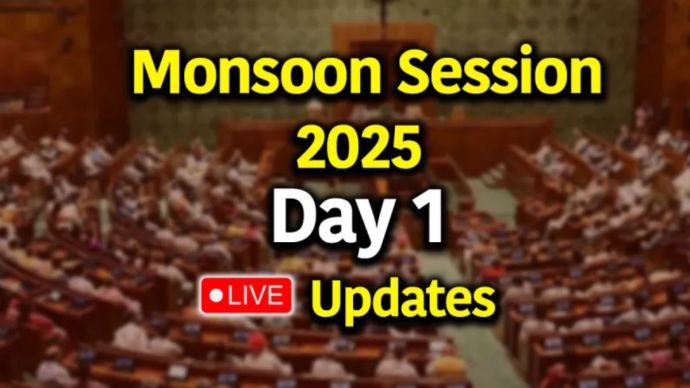After Donald Trump came into power for the second time, several big decisions have been implemented by the US. One such decision is regarding the tariffs. But in the last few weeks, it has been seen that the implementation of tariffs is going on by both the US and China on each other. China on Wednesday,
On Wednesday evening, China hit back at US tariffs by imposing 84% duties on American goods. In response, US President Donald Trump escalated the conflict further, raising already steep tariffs on Chinese imports from 104% to 125%. Beijing remains firm in its stance against what it considers “unfair” trade policies imposed by the Trump administration.
The trade dispute between the United States and China is not fresh news because Trump launched multiple trade policies against China during his first presidency which Biden maintained as president. When Trump started his second presidential term in January 2025 he promptly restarted the trade conflicts with China.
Timeline: The Rise Of The US-China Trade War
Early Tensions And Initial Tariffs (2017–2018)
- April 2017: Trump and Chinese President Xi Jinping agree to a 100-day trade plan, which collapses by July.
- August 2017: The US launches an investigation into alleged Chinese IP theft, estimating annual losses of up to $600 billion.
- January 2018: The US slaps a 30% tariff on imported solar panels, directly impacting China.
- April 2018: China retaliates with tariffs on $3 billion worth of US goods, including agricultural products and aluminum.
- June–August 2018: Both nations impose multiple tariff rounds, affecting over $360 billion in bilateral trade.
Trade War Escalates (2019–2020)
- May 2019: The US hikes tariffs to 25% on $200 billion in Chinese goods. China strikes back with tariffs on US agricultural exports. The US also bans Huawei from sourcing American technology, expanding the conflict to tech.
- Late 2019: Investigations into TikTok begin, and the Pentagon orders staff to delete the app.
- January 2020: The “Phase One” trade deal is signed, with China pledging to buy $200 billion in US goods—targets that were never met.
Trade Disputes Under President Biden (2021–2024)
- October 2022: Biden retains many of Trump’s tariffs and expands export controls on semiconductors.
- April 2024: Biden signs a law banning TikTok; legal challenges follow. Trump pauses the ban in January 2025.
- May 2024: The Biden administration hikes tariffs on Chinese EVs, solar panels, and medical devices, signaling persistent trade friction.
Trump’s Second-Term Trade Offensive (2025)
- February 4, 2025: Trump reintroduces a 10% tariff on all Chinese goods. China responds with tariffs on US coal, gas, and farm machinery.
- March 4, 2025: Another 10% US tariff kicks in; China ups duties on key US exports.
- March 26, 2025: The US blacklists over 50 Chinese tech firms, cutting their access to advanced computing tools.
- April 3, 2025: Trump declares “Liberation Day” with a sweeping 34% tariff on all Chinese imports.
- April 4, 2025: China imposes reciprocal 34% tariffs, halts purchases of vital US farm goods, blacklists 27 American firms, announces rare earth export controls, and lodges a complaint with the WTO. An antitrust probe is also launched into DuPont China Group Co.
- April 9, 2025: US tariffs jump to 104%, prompting China’s 84% retaliatory tariff.
- April 10, 2025: Trump increases tariffs to 125% on Chinese imports while suspending tariffs for other countries for 90 days.
Trump’s Misunderstanding Of Trade Deficits
The United States has been a topic of focus for Trump throughout his years in politics as he attempts to resolve trade deficits with China and other partners. He recognizes excessive trade deficits as evidence of softness that justifies implementing strong trade barriers through “fair trade” policies. His trade policies establish their framework based on the amount of import-export deficits.
Most scholars in economics have implemented the view that trade deficits exist between imports versus exports but do not fundamentally represent economic downturns. The economists state these tariffs create higher expenses for American buyers while damaging worldwide market systems.
Global Pushback And Uncertain Outlook
As the Chinese government sees it the United States conducts excessive and damaging tariff activities so it requests Indian support against this behavior. The European Commission considers implementing reactions to the existing tariff policy. markets show uncertain commitment from investors because of the unstable American trade policies. Trump argues that implementing tariffs will benefit American industries despite their uncertain future impact. China declares its intention to fight against what it labels economic coercion which signifies the ongoing prolonged dispute between these two major economic powers.
Also Read: Trade War Goes Cinematic! China Cuts Hollywood Film Imports Over US Tariffs












